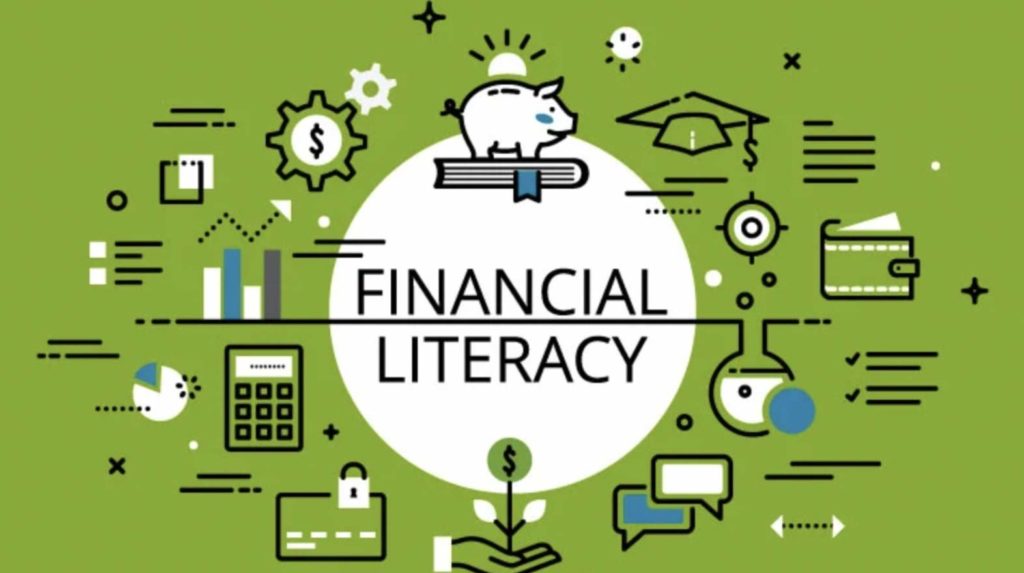The Guide to Financial Planning
Earning money is essential for everyone to live the best possible life, but so is managing and growing it. Finance is more than just taking your paycheck and spending it on what you want.
There are many aspects of finance that you can encounter through your business or life events. By not planning ahead, you can miss out on great investment opportunities and find saving money more difficult in the future.
That’s why we wrote The Malaysian’s Guide to Financial Planning to make you aware of all that you need to know, including the importance of financial literacy, what you can invest in, the various types of accounts, some basic tips on investing, and more.
It’s ideal to know your financial goals from early on so you can set out to achieve them. However, it’s never too late to learn the terms and principles of managing your finances to pave the way for a successful and stable financial future.
The Importance of Financial Literacy

Before we delve into the importance of financial literacy, let’s define it first.
Financial literacy simply means that you understand the important financial terms as well as know how to use your different skills in finance to get ahead in life.
The different terms include compounding, interest, diversification, stocks, and the like, whilst the skills involve personal budgeting, investing, and facing the financial challenges you may have.
As we mentioned, not being financially literate can limit the opportunities to grow your money because you don’t know how to invest them.
Also, you might be getting taken advantage of by someone with inappropriate financial practices without even knowing it.
Anyway, in a survey conducted by Credit Counselling and Debt Management Agency (AKPK), it’s surprising that one out of three people in Malaysia said they weren’t confident in making decisions about their finances. In short, they deemed themselves as having poor financial literacy.
To solve this issue, AKPK and other like organisations have focused on educating individuals and businesspeople by organising finance seminars, fairs, and clubs. Ultimately, this helps to keep the people self-sufficient and the local economy going.
Also, some people choose to use a financial advisor to help them out from the quagmire. This can be a great solution, especially if your business or personal finance isn’t optimistic.
So, our article here can make a great starting point where we will shed more light on financial literacy. We will strive to equip you with the basic knowledge and skills to improve or maximise your overall financial well-being.
The Financial Basics
Here are the basic things you need to know to manage, store, and grow your funds. So let’s take a closer look at each of them in turn:
Setting up a Bank Account
Setting up a bank account gives you a whole gamut of benefits from safekeeping your money to growing it at a certain interest rate.
You won’t have to worry about thieves breaking into your home and stealing your lifetime worth of savings or placing them somewhere safe which no one can access except yourself.
All depositors of member banks, be they individuals or businesses, are also insured up to RM250,000 by PIDM or the Perbadanan Insurans Deposit Malaysia. So, your financial safety is assured, although not the entire amount is covered should the bank become bankrupt.
As to why a bank account is also important, you would need it for many things, such as a savings account, credit or debit card use, ATM use, new home purchase, cheque writing, salary receipt, and to earn interests.
Personal Banking vs Digital Banking

Personal banking is the most prevalent banking system today which you can visit to open an account, deposit or withdraw money, and apply for a loan for personal use, a car purchase, a house purchase, or business needs.
Some of their core services are accessible online for your convenience. Hence, you don’t physically have to visit the bank.
On the other hand, digital banking doesn’t have a brick-and-mortar site as transactions and account openings are purely done online. It’s gradually taking the industry by storm because people are often on the go and have their smartphones with them all the time.
Two Types of Banks You Can Transact With
Commercial Bank – This is the type of bank that most people are familiar with and have an account with. It’s called commercial for the sole reason that it aims to earn a profit from its services to customers.
They offer a wide range of products that aid clients with their finances. Some examples include loans, insurance, auto insurance, and credit cards.
As we said, their clerks usually do business face-to-face with clients but have online app services too. Whereas, some banks are accessible only online wherein you can manage your account or send money regardless of where you are.
Another benefit of using a commercial bank is convenience. With their numerous locations and ATMs, you can handle your bank account or ask for assistance without going far.
Credit Unions – For lower fees and higher interest rates, credit unions are the way to go. They are akin to banks in that they offer checking and savings account, credit and debit cards, auto loans, safe deposit boxes, and so on.
However, credit unions are helmed by their board of directors, as opposed to being supervised by federal and state authorities like banks.
Furthermore, they aren’t as much as banks in terms of branches and ATMs. That means you may have to travel to a farther place (and thus get more expenses) to come and check or update your account.
Types of Bank Accounts You Can Open
Depending on your personal needs and situation, here are a few types of bank accounts you can open:
- Savings Account – This basic account allows you to deposit or withdraw your money whilst earning low interest over time. This is mostly used to settle utility bills, save up for tuition fees, go on a vacation, amongst other lighter expenses.
- Checking Account – Similar to a savings account, a checking account lets you make deposits and withdrawals. However, it’s more liquid than a deposit account, meaning that you can do far more deposits and withdrawals to buy an appliance or settle your expenses using a debit card or check.
- Current Account – It’s mostly used by businessmen who have a lot more regular transactions with the bank. It’s easier to use since they won’t have to give notice whenever a transaction is made.
- High-Yield Savings Account – This one gives you a considerably higher interest rate, which is about 20 to 25 times more than an ordinary savings account.
That said, it would typically require you to deposit a greater sum to be able to open an account, maintain a higher deposit balance, and pay higher fees.
Also, note that whilst you can set up a high-yield savings account with a physical bank, you can do so online as well.
Emergency Funds

Emergency funds pertain to the money you set aside particularly for financial emergencies. We’re talking about costly AC repair or replacement, hospital bills, unplanned travel expenses, or other costs.
This shouldn’t necessarily be put in a savings account, but you can open a separate account with your bank so that you won’t use up your reserve budget needlessly. Remember that the amount should cover at least three to six months’ worth of your expenses.
Debit vs Credit Cards
Both debit and credit cards are widely accepted by shops, service providers, and apps around the world. Below we discuss their uses, pros and cons, and the different types you can use.
A debit card lets you pay for items conveniently, but it’s only limited to how much you have in your checking account. In other words, if your deposit money isn’t enough, you can’t buy the item.
In contrast, a credit card does not depend on your checking account. With it, you can borrow credit to make small to large purchases alike such as an antique piece of furniture or an appliance.
However, you would have to pay your borrowed amount plus interest set by the bank for the credit card by the end of the month. Otherwise, you will get buried in debt as time goes on and won’t be entitled to credit cards with better deals or their perks.
Getting approved for a new credit card is a good thing, though it’s also a responsibility. Paying your credit card bill in full is essential to build a flawless credit rating, which is what creditors or insurance companies look at to ascertain that you will pay back your debt or premium religiously.
Debit Cards
Pros
- Convenient to use
- Widely accepted
- No annual fees
- Can help with budgeting
- Interest-free
Cons
- Spending limit depends on checking account
- Don’t build your credit
- Can have overdraft fees
- Limited security features
Credit Cards
Pros
- Very simple to use
- Lots of perks offered
- More secure than cash
- Can offer rewards points
Cons
- Interest rates can be high
- Annual fees
- Credit card bills can pile up
The Different Types of Credit Cards
Credit cards come in several types with their different uses and benefits. These are the following:
- Low-Interest Credit Card – If you are a regular buyer, having a low-interest credit card may work for you as this can save you many thousands of ringgits in a year.
- Balance Transfer Credit Card – Balance transfer cards let you switch from a card with a higher interest to a lower one, thus allowing you to cut down your expenses and improve your credit score.
- Cashback Credit Card – Ideal for people who want to earn back a portion of what they spend every month. The drawback of this one is it has a higher APR (annual percentage rate) and no other rewards besides cash.
- Travel Rewards Credit Card – If you’re a frequent flyer and spend a lot, you should get a travel credit card. You can exchange your purchase points for great perks like discounts for hotels, rental cars, future flights, and other nice prizes.
- Business Credit Card – Available for small to large businesses, a business credit card is used for work purposes rather than for personal use.
This can be a great choice since this gives the business owner more savings than if he is to use an ordinary credit card. Aside from that, it encourages lighter payments and a better credit score.
Investing

Making your money grow? Other than working eight hours five days a week, you could try your hand at investing your money in a security.
We warn you, however, that each investment security has a certain level of risk. In other words, you could gain or lose money as a result of it.
Common Investment Vehicles
Among what you can invest in are these things:
Stocks – Stocks are the most common investment vehicle to use. It’s also called shares or equity which make up the company’s assets and earnings.
Therefore, it follows that by purchasing company stock, you get a very small portion of ownership to the business that sold it.
Also, you are entitled to share in the dividends of the company if available and participate in board meetings too. By the way, note that you can also sell your stocks to someone you know.
Since stock is affected by many factors including the local economy, global economy, the reputation and profits of the company, current events, and more, its value fluctuates every day.
Exchange-Traded Funds (ETF) – An ETF is a collection of securities contained in one security. Think of it as a pie that is composed of different slices of securities.
Exchange-Traded Funds are offered by different industry sectors, giving you more buying choices than other security types.
Like stocks, these are traded every day in the stock market. But it’s a safer option compared to stocks because different securities are in place whose value can go up or down, so you have more positive chances of getting an investment return.
Bonds – The safest investment choice of the three we listed, bonds are issued by companies, municipalities, and governments to fund their business operations and public projects.
When you buy a bond from an organisation, you are lending money to them which they will pay back on the stated date, plus interest, which they term as the coupon rate.
Its pricing inversely correlates with interest rates. So when the coupon rate is down, the price goes up; whereas if the coupon rate is up, the price goes down, simply because more people are investing in that bond.
How to Start Investing
To begin investing, you would need to work with a stockbroker who will handle the transaction for you. There are different types of brokers which include the ones below:
- Full-Time Broker – They are the ones who give advice and manage your transaction for you at a certain rate.
- Online or Discount Broker – Working solely online, they also help you choose and buy a security that fits your financial situation. They cost less than hiring a full-time broker but there’s no personal interaction with the investor.
- Robo-Advisor – This is a digital platform that provides automated and algorithm-driven financial planning to clients. It can select suitable investments and execute trading for you.
The top two investment platforms that customers use in Malaysia are Raiz and Wahed to grow their funds. Also, these have built a reputation for being incredibly simple and convenient to use.
Financial Tips for Beginners

We’ve been discussing financial planning for a while now. Do you know what to do to take control of your finances?
Well, let us help you with that; below are some simple and practical tips you can work on right now:
Set short-term and long-term goals
The first thing you should do is to go over your finances and think about what you can improve and what you’d want to achieve in a couple of months from now to ten years or longer.
If you are juggling with lots of ideas, you can grab a piece of paper and write down all of them. You can check out the Internet too for inspiration or ask friends and family as to what will be the best thing to do.
This should point you in the right direction to have a safe and stable financial future. It isn’t important that you see results fast, but that you work to achieve each of your goals whilst staying motivated.
Create a budget
With the many expenses we have to settle, not recording them can make you lost. So, you can create or lay out your budget and debts and think about how to use or close them.
Even, you can try following the 50/30/20 principle in which 50 per cent of your money should go into paying your rent, utility, and car fuel, 30 per cent on less important yet still necessary expenses like Internet and phone plans, and 20 per cent for your savings and emergency funds.
Pay off your credit card debt
We have things we have to do and like to buy and oftentimes we need to let them charge the credit card. But, don’t spend beyond what you can afford, since the bills can stack atop each other and if you fail to pay them, you’ll get a bad credit score.
So, make sure to be a good payor by settling your credit card expenses on time and consistently. By doing this, you can be entitled to a balance transfer deal wherein you can transfer your expenses to the new card with a lower interest rate for a given period (like a year), allowing you to get huge savings.
Borrow wisely
As you go on in life, there comes a time that you have to take out a loan to pay for that college education, car, or house. When you do so, the smart thing to do is to only borrow the amount that you need.
Typically, lenders aren’t that interested in helping you get the best deal, but for them to earn more. So, you’ll have to rely on your own judgment on whether the loan will do your finances good.
Also, check at least three companies if they can offer you a better deal and interest rate before you decide to loan from the creditor. Early on, you can save up as much as you can so you can loan a less amount, and therefore pay less.
Save money for your retirement
The same guideline stands here: start as early as you can. If you start as early as you can, your funds can grow over time with interest and it wouldn’t be as difficult to save as when you get older.
You have to think about what kind of future you want: a lavish or simple one. And when you save for your retirement, you have to consider inflation, your lifestyle, and your retirement age.
Moreover, you have to build your emergency fund. This way, in case you have an emergency and have to withdraw money, you won’t need to take from your retirement savings—allowing you to grow what you currently have.
Conclusion
So that ends our discussion for today. We’ve tackled the basics of financial planning, including the concepts, products, and some quick tips that can help you maintain and grow your savings for the future.
This is just the tip of the iceberg, though, as there’s more to learn. If you have any comments or questions about the subject, kindly send us a message and we will get back to you in a bit.


